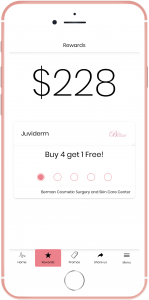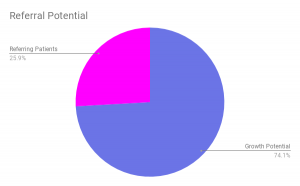
How To Win Referrals & Influence Patients: 3 Simple Rules
How does your practice win referrals and influence patients?
In case you are not convinced that Word of Mouth, or referral marketing is superior to all other forms of marketing, perhaps this will help: 92% of customers trust referrals from people they know, customers are 4 x more likely to purchase when referred by a friend, and referred customers are 16% more loyal than non-referred customers. When Lemod was imagined in the offices of Austin-Weston and Berman Cosmetic Surgery, I discovered a gaping hole in the cosmetic surgery business: a referral marketing solution. Now that Lemod has built the platform that makes starting a referral program simple, we can focus on referral excellence. In this article, we’ll discuss 3 rules to referral marketing, their importance, and how they can optimize your referral program.
Rule 1: You Must Be Refer-Able

Apropo to the article title, Dale Carnegie once said, “Instead of worrying about what people say of you, why not spend time trying to accomplish something they will admire.” Although this statement may seem counterintuitive for the guy pushing a referral program, it couldn’t be more valid. Patients “admire” remarkable service. In the Forbes article 7 Effective Ways to Boost Valuable Business Referrals, #1 on their list is “Provide Jaw-Dropping Customer Service”. In fact, if you don’t get this part right, then nothing else matters. Additionally, if you need inspiration in this department, there are creative and brilliant examples all over the internet. For instance, the Ritz Carlton on employee empowerment, Kimpton on customer engagement, or Disney’s approach to making customers feel important. Going above and beyond to ensure your practice is “[accomplishing] something [your patients] will admire” is paramount to being referable.
 Rule 2: You Must Incentivize
Rule 2: You Must Incentivize
What incentive would truly motivate your patients? Providing referral incentives is the most variable rule of a referral program. That is, your practice will need to identify referral incentives that excite your specific patient population. Although this may vary from practice to practice, there is precedent to help with structure. One study concluded that offering incentives to the referring and referred customer increases referral likelihood. It also found the incentive did not have to be overly generous. Notwithstanding, showing GRATITUDE should be a constant. If a patient was kind enough to refer you a breast aug, for instance, they deserve some type of recognition. This does not mean handing out Amazon gift cards, which I have seen. It means finding an opportunity to connect with the patient, increase loyalty, and increase the chance of future referrals.
Rule 3: You Have to Ask
 Do not assume your patients will refer your practice. By not asking your patients to refer, you are missing opportunities you will never get back. According to a Texas Tech study, 83% of customers are willing to refer after a positive experience, but only 29% actually do. The FourthSource says, “This problem has an easy solution: the please and thank you formula. Remember, most people that received a good product and service are willing to refer it, so don’t be afraid to ask them to!” Therefore, if you give patients an easy way to refer friends and you provide incentives, you could have way more pink (see chart).
Do not assume your patients will refer your practice. By not asking your patients to refer, you are missing opportunities you will never get back. According to a Texas Tech study, 83% of customers are willing to refer after a positive experience, but only 29% actually do. The FourthSource says, “This problem has an easy solution: the please and thank you formula. Remember, most people that received a good product and service are willing to refer it, so don’t be afraid to ask them to!” Therefore, if you give patients an easy way to refer friends and you provide incentives, you could have way more pink (see chart).
Concluding Referral Marketing
In closing, I hope you have at least one takeaway regarding referrals, referral programs, and their importance. In a 2 year study by Heinz Marketing, they found that companies with a formal referral program experienced 86% more growth than the companies that didn’t. Nevertheless, I can say with certainty that following the rules above will earn you more referrals. If you would like to formalize your referral marketing program, provide reward incentives, and easily track who is referring your practice, please contact me.
Post a comment
You must be logged in to post a comment.








John
I love the Dale Carnegie quote…..strong. John Cave, M.D.